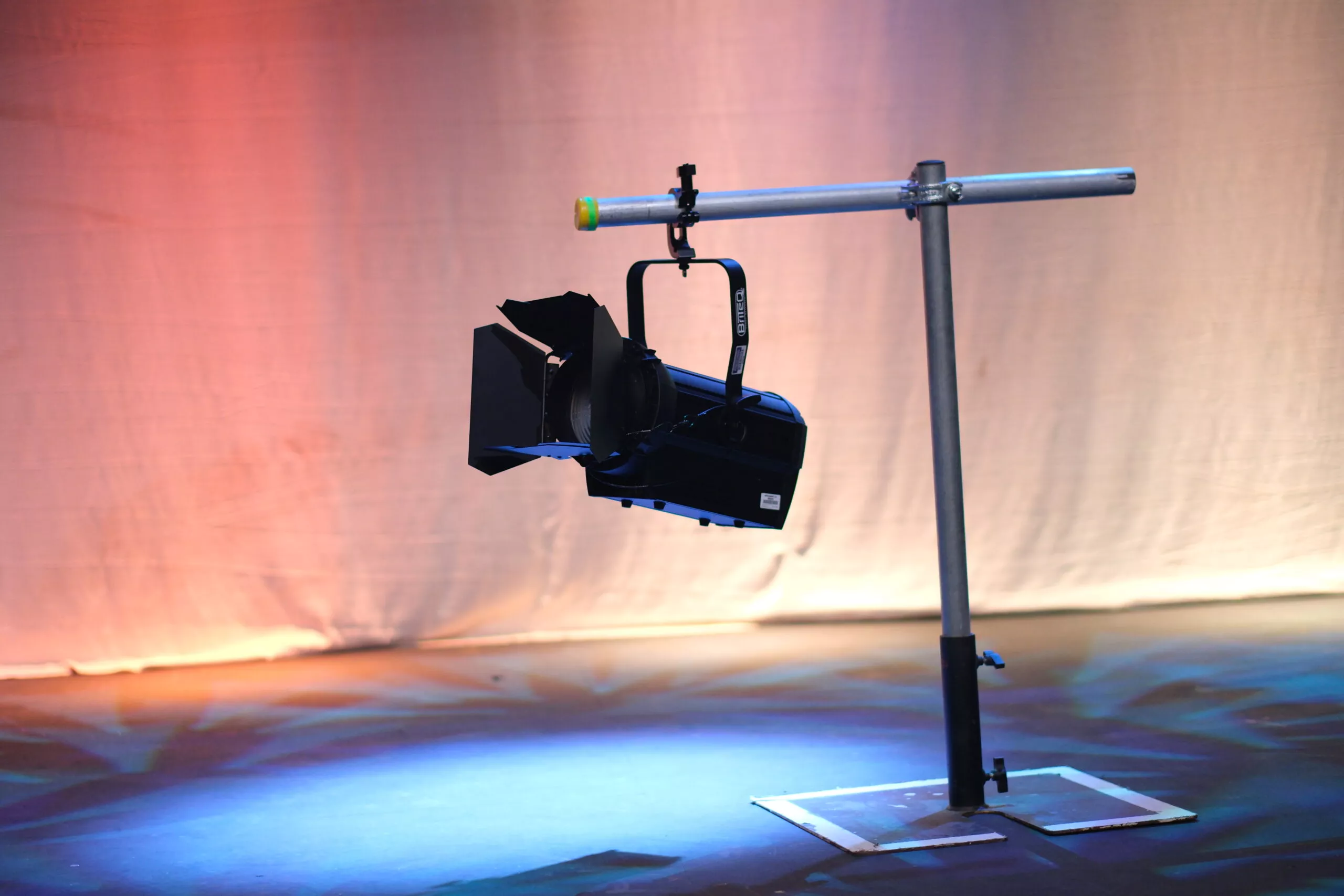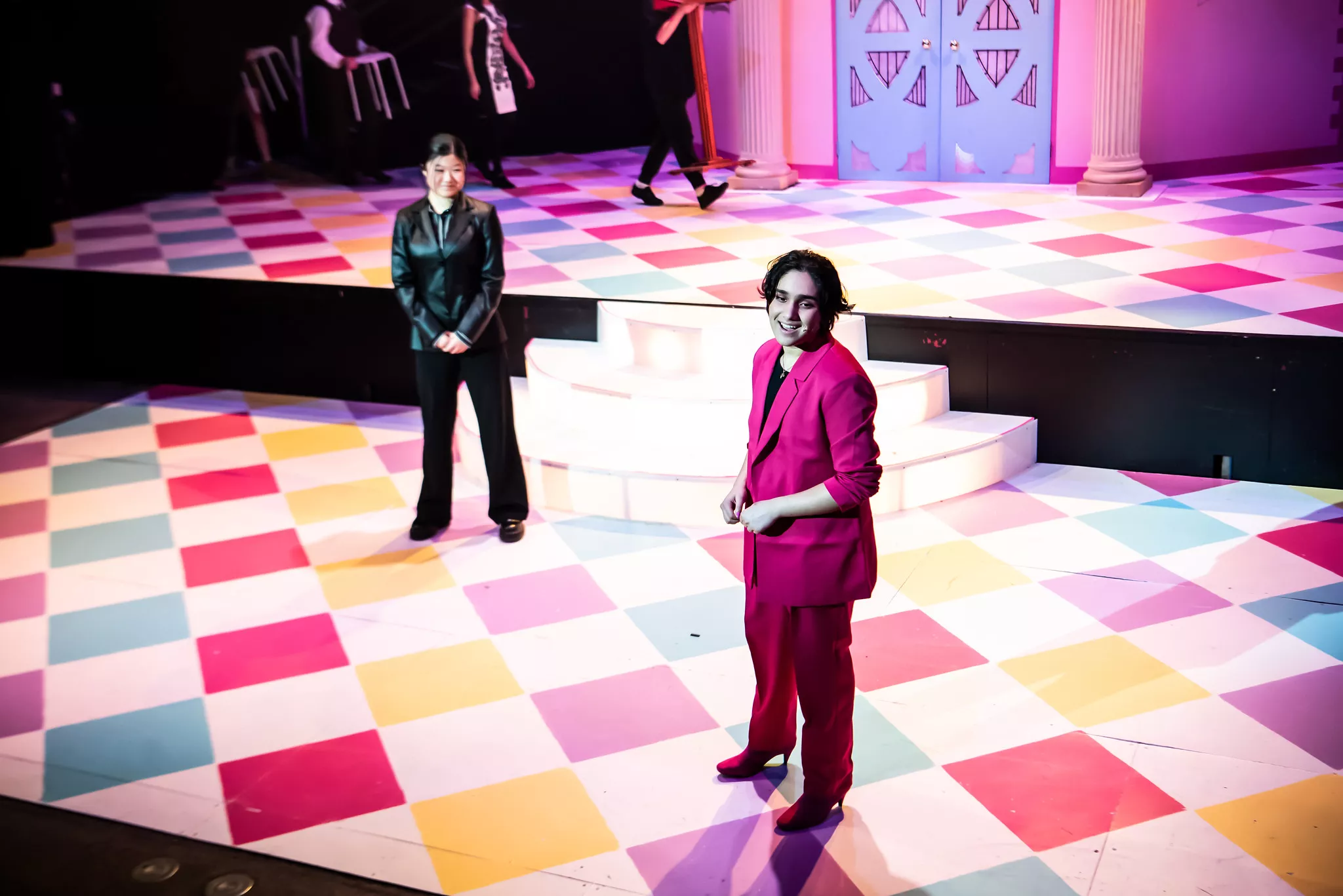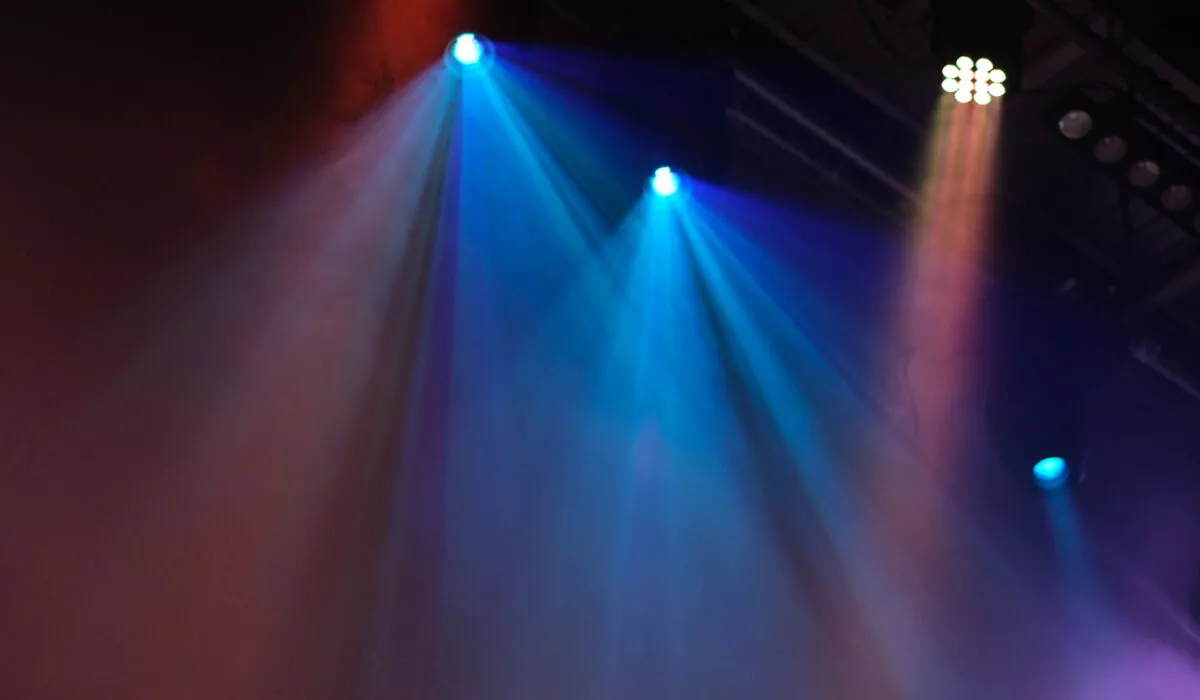Thinking
Over the summer break, with help from the Parents’ Guild and Estates, the PAC lighting and stage floor were given a huge update.
Theatre lighting is to many a baffling myriad of slightly different shaped things, splodging out different colours and shapes across a stage in pretty ways, all controlled by some mythical technical wizard high up in the gods of a theatre. At NLCS, students are given a view behind the curtain to figure out what does what and how. In keeping with this strand of extra-curricular education, we aim to have technologies which best reflect the world outside, for students to learn about and use. The Parents’ Guild have recently made a significant update to the lighting technology available to use in the PAC and its impacts have been felt right from the first day of term.
In order to explain the significance of this update, we need a deep dive into a little historical context and colour theory. Brace yourself. For decades, tungsten lighting fixtures have ruled the roost in theatre, using great quantities of electricity to excite the filament inside a lamp and produce a brilliant bright white light. When a piece of coloured gel is fixed in front of this, it produces the rich, vibrant colours we associate with theatre lighting. The important part of this, however, is what the white light from a tungsten lamp actually consists of – almost the full spectrum of visible light smushed together, forming a brilliant white beam from which most colours can be subtracted. This way of making colour is almost diametrically opposed to how the modern LED fixtures make light. Instead of a single filament of white light with gels to subtract unwanted colours, LEDs use a combination of single colour Light Emitting Diodes and add each colour together to create variations.

When the first LED theatre lights came onto the market about 20 years ago, they were dismissed as gimmicky because they paled into insignificance compared to a tungsten source. Why? Well, while on the face of it both lights could make the same colour, one added lights together while the others subtracted the bits of white light it doesn’t need. So, the tungsten lights continued to emit a wide range of light through their coloured gel, while the LEDs were just making a few spikes of light which, through some evolutionary trickery, our eye convinced us was about right.
But a light on an actor’s face is the same regardless of how you make it, right? Nope. And there in was the problem with the older LEDs. Many contained just red, green and blue diodes and they just didn’t fool audiences. Shows were criticised for how actors were lit, because the LEDs failed to meet audience expectations of what they thought colours should look like – rich and full, instead of artificial. So, for a while, all LEDs were really good for was big washes of colour across the stage and tungsten retained its crown for lighting actors. However! Because of a proposed change to EU law, tungsten lighting was discovered to fall wildly short of environmental guidelines on energy consumption and something had to give. Enter the additional colours! By improving the quality of the LEDs and adding in lime, amber, cyan and other colour diodes, ingenious manufacturers began to close the gap on tungsten, and slowly the hardened eyes of theatre critics and lighting designers began to soften to the newer fixtures. Couple this with the environmental advantages and the ease of switching between colours, and fate was sealed for widespread use of tungsten lighting in theatre.
So, here we are – the future. With reliable LED fixtures now in theatres across the world, it was only right that the PAC should get involved! Our updated rig now contains 50+ LED fixtures, all with different abilities and features, allowing flexibility like we’ve never had before. Every student taking to the PAC stage from now on will feel the benefit of the changes the Parents’ Guild have made and I am immensely grateful to them. The next time you visit the PAC, take a moment to look at the richness and depth on offer from our fabulous new lights.

The floor! I almost forgot about the floor! In the two years I’ve had the pleasure of running the PAC, my biggest problem has been the floor – so scarred and tattered from years of service that it was beginning to fall to bits! The Estates team finally gave in to my nagging and the old floor was removed and a brand-new floor laid in its place. We didn’t opt for a like for like replacement though, instead choosing to have a solid plywood floor permanently installed with dance floor mats we could lay over when performances required it.
So, why this approach? Partly for safety and partly for ease! The safety aspect is that scenery for many performances needs to be secured to the floor and previously this meant putting screws THROUGH our dance floor and permanently damaging it! Crazy, right? Now we can simply roll up and store the dance floor and put as many fixings into the floor as we need, keeping the scenery as safe as possible and the dance floor in pristine condition for the dancers to use. The ease relates to painting the floor. Lots of our bigger productions call for painted floors to help tell the story and, with the old stage, a whole new layer of wood was added on top to be painted, all of which took time (and a toll on my knees!). Now, we can simply paint the floor itself and once the production is finished, paint back over it. While you, dear reader and enjoyer of PAC productions, may not think this change is even worth writing about, just know my knees and the knees of future technicians will be all the better for it!
Mr Thomas Boase, Theatre Manager
This article was taken from the latest edition of Spotlight which you can read here.


